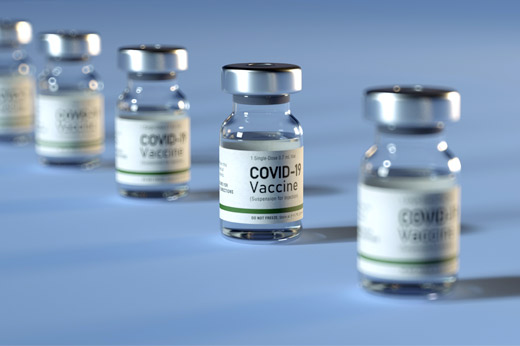 Blog
Blog
COVID-19 Vaccines FAQ
COVID-19 Vaccines FAQ
A ray of hope through the otherwise grim winter developments in the coronavirus pandemic, two COVID-19 vaccines received authorization for emergency use during December. Just over a month later, about 50 million doses were distributed throughout the country and about half of those have actually been administered to individuals so far. President Biden’s new administration is working to accelerate vaccinations, but for the time being, the same measures for reducing the spread of this virus remain in place – mask wearing, social distancing, regular hand washing and avoiding crowds.
There are many questions people have about these vaccines and how they will affect them. Here are some of the most frequently asked questions about the COVID-19 vaccines:
Q: When will I be able to receive the vaccine?
A: Most members of the general public under age 65 will probably not have access to the vaccine before Summer 2021. Individuals with underlying conditions (such as diabetes, lung conditions and cancer) that increase their risk of serious illness from the virus are given priority, along with health care providers, first responders and other essential workers who face greater exposure. Both of the approved vaccines require two doses, either three or four weeks apart, to achieve their maximum effectiveness.
Q: How will I know when my turn to be vaccinated is coming up?
A: Unfortunately, there is currently no single answer. It depends on where you live. Some states, including California, have an online registration system for collecting your information according to your age and risk factors (both medical and occupational). Many of these systems will contact each individual, by phone, email or text, to let them know when they can make an appointment to be vaccinated. Other states have telephone hotlines for getting registered or providing updates on the categories of people currently eligible to schedule vaccination. Check with your state or local health department to find out how it works in your area.
Q: What occupations have greater priority for the vaccines?
A: Front-line health care workers, staff in residential care facilities, fire and police first responders are prioritized due to their essential duties during the pandemic as well as their occupational exposure risks. In some locales, teachers are also being put in higher priority categories to help facilitate the reopening of schools.
Q: Are the vaccines safe? Is there a chance they could give me COVID-19?
A: The experience of the vaccines through the clinical trials and wider administration to over 24 million people in the U.S. indicates a very low risk of reaction and minimal side effects. Approximately two to six out of one million individuals will experience an allergic reaction when receiving the vaccines, and these have been quickly treatable. When you receive the vaccine, you will need to remain at the facility or site for about 30 minutes after you are inoculated to make sure you don’t have a serious reaction. The two approved vaccines do not contain any live coronavirus, so you cannot be infected by the vaccine.
Q: Once I get my vaccinations, do I have to keep wearing a mask and social distancing?
A: Yes. The vaccines are only about 95% effective in preventing infection, so the precautionary measures for reducing the spread will stay in effect until a substantial portion of the population is vaccinated and infection rates are driven down. In addition, a person who is vaccinated may still be able to carry and transmit the virus to others even though that person is not infected with the disease.
Q: Where can I get more information about COVID-19 vaccines and how to get my vaccinations?
A: The Centers for Disease Control (CDC) web site has an extensive Q&A section about COVID-19 vaccinations and recommendations for individuals. In California, you can register to be notified of your turn to be vaccinated here. You can also find out how to reach your own state health department for more specific guidance with the CDC’s search tool.
About Ju Anderson
Ju Anderson, Vice President, currently works with large health care clients to create an effective strategy to address the health and welfare benefit needs including financial setting, implementation, efficacy and performance management of benefit programs. Ju has over 20 years of benefits and management consulting experience.
Subscribe
Subscribe to the Keenan Blog





